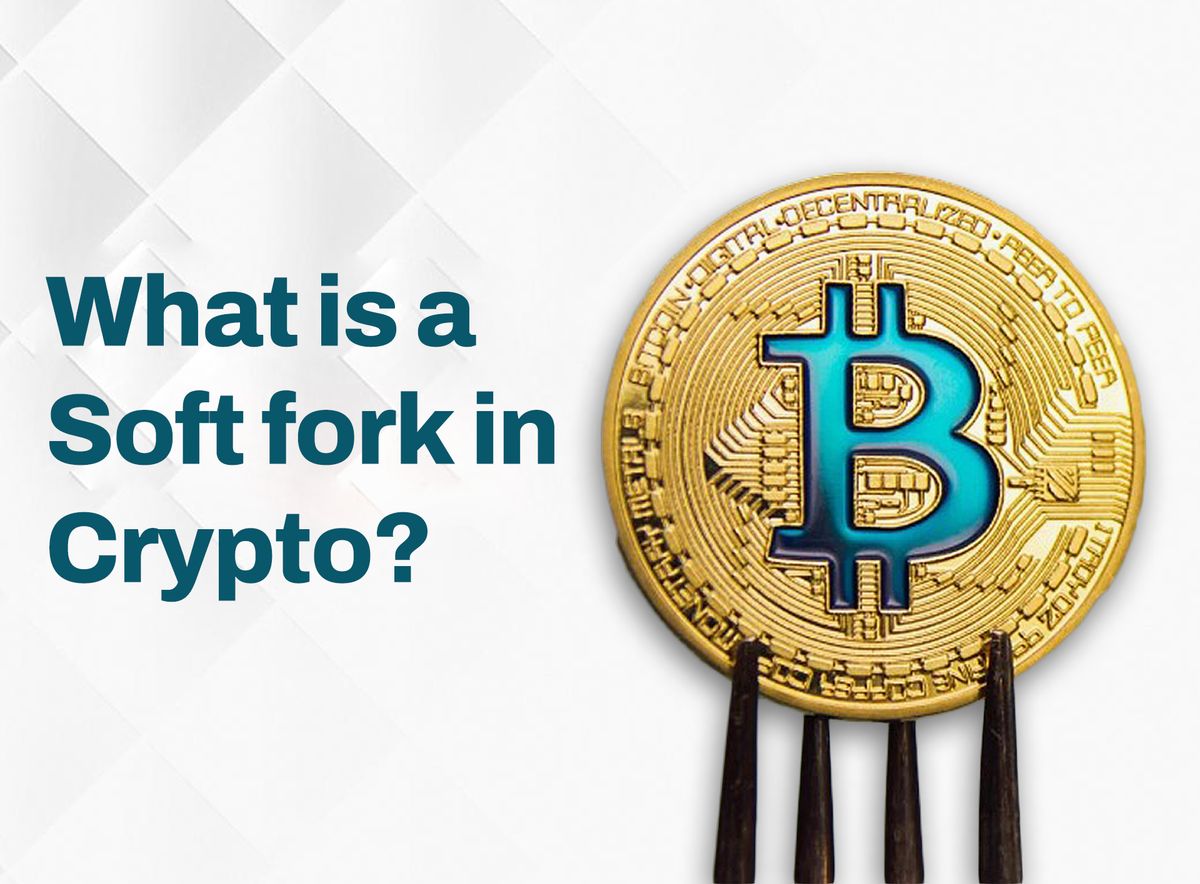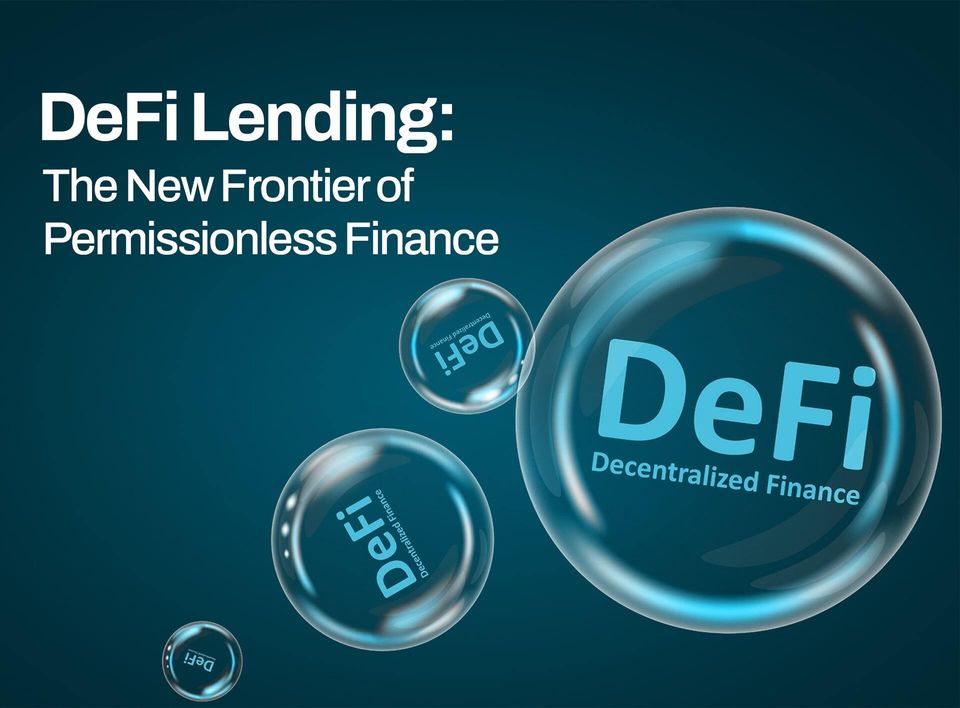What is a Soft Fork in Blockchain
A soft fork is a change in a blockchain's software that rejects old transactions, making miners update their software for older nodes.

Table of Contents
- What is a Soft Fork?
- How do Soft Forks work?
- Reasons for and examples of Soft forks
- Benefits of Soft Forks
- Drawbacks of Soft Forks
- FAQs
Forks exist as a result of the blockchain. A fork comes into existence when the blockchain receives specific updates. This is similar to how you need to update computer programs, but the cryptocurrency equivalent of it.
Blockchain forks help cryptocurrencies provide more flexibility and allow for improvements in features like security, usability, scalability, and so forth on the blockchain.
As is well known, a leading feature of cryptocurrency is its decentralisation: there’s not a single governing body.
Instead, decisions made on the blockchain result from everyone who participates in the network agreeing with the proposed fork. In other words, they must reach a consensus.
The update(s) can be minor or a major one, with significant changes to how a cryptocurrency operates. That is the key difference between a soft fork and a hard fork.
A soft fork often results in updates to the blockchain protocol but without creating a new version of the blockchain that is incompatible with the old one or creating a new cryptocurrency.
In this article, we will examine soft forks’ concepts, how they work, their benefits, and potential drawbacks.
What is a Soft Fork?
A soft fork is a protocol change on a blockchain’s software that invalidates previously accepted transactions, requiring miners to update their mining software for older nodes.
It is a type of modification to a blockchain that allows the addition of new features and improvements of its functionalities without any drastic structural changes.
The modifications or added functionalities are backward compatible, which means that an upgrade or change in the blockchains protocol allows older nodes to recognise and consider newer blocks; that is, the previous versions of the existing blockchain remains.
However, the fork invalidates older blocks or transactions for nodes that follow the new rules.
The backward compatibility of a soft fork is what differentiates it from a hard fork. It’s like having an update for Microsoft Word rather than needing to install a brand-new version of the program.
Soft forks require only a majority of the participating miners to agree to upgrade and enforce the new rules.
In contrast, hard forks create a permanent split in the blockchain that requires all nodes to upgrade and agree on the new version. Soft forks typically involve changes to the consensus rules of the blockchain, such as altering block size limits, adjusting transaction validation rules, or introducing new features.
How do Soft Forks work?
Forking, in crypto, is a process that involves a series of well-structured steps. To initiate a soft fork, a new rule that modifies the existing protocol is proposed. Since soft forks rely on a majority of miners to accept the new rules, a consensus has to be reached.
Once an upgrade is implemented, they start validating and adding blocks that comply with the newly modified protocol.
A great feature about the soft fork is that it allows older nodes—the ones not running the updated software—to still recognise and process the blocks created after the soft fork. Like a software update, users with older versions can still interact with the system; they just miss out on some new features.
Reasons for Soft forks and some Soft Fork examples
Soft forks are used to make upgrades to the blockchain, improve its functionality, or fix an issue. Soft forks can also be initiated by a temporary divergence in the network, where the miners using the mon-upgraded nodes violate a new rule that their nodes are unaware of.
Examples of soft forks
Bitcoin, the most popular cryptocurrency, has employed soft forks to add features such as Pay-to-Script-Hash (P2SH), enhancing the coin’s scripting capabilities and security.
The Segregated Witness (SegWit) Upgrade (July 2017) is one of the most well-known Bitcoin soft forks. This upgrade split up signature data into a separate memory cache, allowing nodes to transact data into a block stored in the computer’s RAM. This, in turn, made more room for more transactions to fit into a single block without breaking any previous rules.
Like Bitcoin, Ethereum, another blockchain giant, has also used soft forks for upgrades. The Beacon Chain (December 2020) that launched a series of multiple upgrades designed to change the protocol’s consensus mechanism. This change transformed the consensus mechanism into a more efficient Proof-of-Stake protocol.
With this change, a new Beacon Chain was introduced, and Ethereum users could vote on transaction approval based on the amount of ETH they pooled on this blockchain. Also, the Bellatrix Upgrade (September 2022) was an upgrade that finalised the merger of the Ethereum blockchains and moved it into a proper Proof-of-Stake consensus mechanism. This upgrade allowed consensus users to execute transactions on the Beacon Chain.
Soft forks vs Hard forks
A hard fork creates a permanent split in the blockchain, making two versions, but a soft fork maintains a single chain.
Hard forks are not backward compatible. The permanent split in the blockchain ensures that nodes running on the older software will no longer be able to validate blocks created with the new rules. Soft forks, however, are backward compatible. Nodes running the older version of the software can still validate blocks created with the new rule, and old nodes cannot interact with the new chain.
Soft forks are suitable for adding features that don’t change the core rules of the blockchains’ protocol, while hard forks are for introducing major changes to the blockchain protocol or resolving disagreements within the community when a consensus cannot be reached for a soft fork.
Benefits of Soft Forks
- Soft forks enable blockchain networks to undergo gradual, less disruptive updates. Since older nodes still work, there’s no need for immediate updates, which promotes a seamless transition during upgrades and causes minimal disruption to network operations.
- Soft forks ensure continuity of operation for blockchain networks by allowing nodes to transition to the updated protocol without disruption seamlessly.
- They are easier to adopt, as there is less pressure on miners and users to upgrade immediately, which promotes wider acceptance.
- By maintaining backward compatibility, soft forks mitigate the risk of network fragmentation and ensure that all nodes continue to participate in the consensus process.
- They allow for the introduction of new functionalities to the blockchain without breaking compatibility with older nodes.
- Soft forks can be used to introduce security upgrades to the network and implement new cryptographic mechanisms.
Soft forks demonstrate the balance between innovation and consensus in the blockchain world, making them a vital tool in the evolution of cryptocurrencies.
Drawbacks of Soft Forks
- The scope of a soft fork is limited and may not be right for carrying out significant changes on the blockchain. Soft forks can only bring about changes that are backward compatible; they can’t implement functions that may fundamentally alter the blockchain’s core workings.
- In some cases, miners who choose not to upgrade to the newly changed rules can exploit a temporary advantage.
- Although they are generally easier than hard forks, soft forks can be technically complex to implement.
- Reaching a consensus among the network participants is important for the success of a soft fork, and this process can be very slow, at least compared to hard forks.
- Soft forks are not capable of creating a network split. However, they can still lead to temporary disruptions if the majority of the network participants don’t upgrade to the new rules. This can cause temporary instability in the network.
To Wrap Up
Soft forks offer the opportunity to upgrade the blockchain without the upheaval of a hard fork. They promote network stability by maintaining backward compatibility and minimising disruption, allowing blockchain technology to adapt and evolve.
Although their limited scope and potential for exploitation require careful consideration during implementation, soft forks highlight the balance between innovation and maintaining a robust, secure network.
The times we live in ensure that we will continue the evolution of forks, giving us innovative and sustainable ways to use cryptocurrencies in the future.The technology is becoming faster and cheaper to implement, opening doors to millions of previously underserved people around the world.
FAQs
Q: What is a soft fork in crypto?
A: A soft fork is a type of blockchain protocol upgrade that maintains backward compatibility with older versions of the protocol, allowing nodes that haven't upgraded to still operate.
Q: How does a soft fork differ from a hard fork?
A: Unlike a hard fork, in which non-upgraded nodes can't validate blocks produced by upgraded nodes, a soft fork allows non-upgraded nodes to still accept blocks produced by upgraded nodes, albeit with some limitations.
Q: What's the purpose of a soft fork?
A: Soft forks are often implemented to introduce new features or enhancements to a blockchain network while ensuring minimal disruption to the existing network and its participants.
Q: Can you give an example of a soft fork?
A: One example of a soft fork is the implementation of Segregated Witness (SegWit) in Bitcoin, which aims to increase transaction throughput and fix transaction malleability without necessitating a hard fork.
Q: How is consensus achieved in a soft fork?
A: Consensus is achieved through the majority of miners and nodes adopting the new rules set forth by the soft fork. As long as a majority of the network agrees to the changes, the soft fork is considered successful.
Q: What happens if some nodes don't upgrade during a soft fork?
A: Nodes that don't upgrade during a soft fork may still operate on the network, but they might not be able to validate certain transactions or blocks that adhere to the new rules introduced by the soft fork.
Q: Are there risks associated with soft forks?
A: While soft forks are generally considered less risky than hard forks due to their backward compatibility, there can still be risks, such as unintentional network splits, if the new rules aren't widely adopted.
Q: How are soft forks initiated?
A: Soft forks can be proposed and implemented by developers and community members through various consensus mechanisms, such as miner signaling or node voting.
Q: Can soft forks be reversed?
A: Soft forks can technically be reversed if the majority of the network decides to abandon the new rules and revert to the previous protocol. However, this is rare and often requires significant community consensus.
Q: How can I stay informed about upcoming soft forks?
A: To stay informed about upcoming soft forks and other protocol upgrades, it's advisabke to follow official announcements from the developers of the respective blockchain projects and to stay engaged with the community through forums and social media accounts.
Disclaimer: This article was written by the writer to provide guidance and understanding of cryptocurrency trading. It is not an exhaustive article and should not be taken as financial advice. Obiex will not be held liable for your investment decisions.




